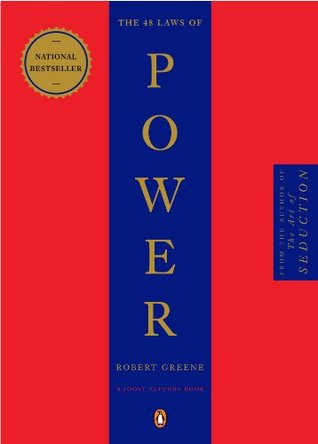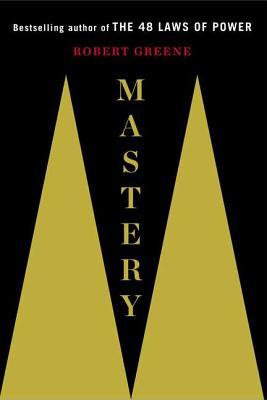
Estimated read time: 6 min read
One Sentence Summary
A classic guide to military strategy and tactics.
Table of Contents
Introduction
"The Art of War" is a timeless classic written by Sun Tzu, a Chinese military strategist, and philosopher. This influential work is a comprehensive guide to strategy, tactics, and warfare, but its principles extend far beyond the battlefield, making it a valuable resource for business, leadership, and everyday life.
Brief Synopsis
Plot Overview
"The Art of War" is a treatise on military strategy and tactics composed of 13 chapters. The text is divided into different sections, each focusing on a particular aspect of warfare. It covers essential topics such as strategic planning, tactical positioning, the use of deception, and the importance of understanding the enemy. Sun Tzu's teachings emphasize the importance of preparation, flexibility, and the wise use of resources in achieving victory.
Setting
The book was written in ancient China, during a period characterized by constant warfare among the various states. Sun Tzu's insights were shaped by the turbulent political and military landscape of that time, providing a practical and insightful perspective on the realities of conflict and competition.
Main Characters
| Character | Description |
|---|---|
| Sun Tzu | The author of "The Art of War," an esteemed military strategist and philosopher. His teachings have had a profound impact on warfare and strategic thinking. |
Story Points Over Chapters
Chapter 1: Laying Plans
Sun Tzu emphasizes the importance of careful planning, stating that a successful war is based on thorough preparation and strategic thinking.
Chapter 2: Waging War
This chapter delves into the various factors to consider before engaging in warfare, such as assessing the strengths and weaknesses of both your own forces and those of the enemy.
Chapter 3: Attack by Stratagem
Sun Tzu discusses the importance of adapting to the enemy's tactics and using deception and surprise to gain an advantage.
Chapter 4: Tactical Dispositions
This chapter focuses on the importance of positioning and adaptability, as well as the use of terrain and other environmental factors to gain an edge in battle.
Chapter 5: Energy
Sun Tzu highlights the significance of maintaining morale, discipline, and energy within an army, emphasizing the pivotal role of leadership in sustaining these qualities.
Chapter 6: Weak Points and Strong
The author discusses the concept of identifying and exploiting the weaknesses of the enemy while also recognizing the strengths of one's own forces.
Chapter 7: Maneuvering
This chapter delves into the art of strategic maneuvering, emphasizing the importance of flexibility and adaptability in responding to changing circumstances.
Chapter 8: Variation in Tactics
Sun Tzu stresses the need for diverse and adaptable tactics, as well as the importance of surprise and unpredictability in gaining an advantage.
Chapter 9: The Army on the March
This chapter focuses on the logistical and organizational aspects of warfare, including the importance of efficient supply lines and the effective management of resources.
Chapter 10: Terrain
The author explores the impact of terrain on warfare, emphasizing the need to understand and leverage the natural environment to one's advantage.
Chapter 11: The Nine Situations
Sun Tzu discusses the nine common situations in warfare, providing strategic guidance for each scenario based on different combinations of advantages and disadvantages.
Chapter 12: The Attack by Fire
This chapter emphasizes the use of fire as a tactical weapon, both in a literal and metaphorical sense, highlighting the destructive power of well-executed attacks.
Chapter 13: The Use of Spies
The book concludes with a focus on the importance of intelligence, espionage, and information gathering as essential elements of successful warfare.
Main Events
"The Art of War" does not follow a traditional narrative structure with specific events, as it is a strategic and philosophical treatise rather than a story with a linear plot. However, the main events can be understood as the strategic principles and tactical insights presented in each of the 13 chapters. These events include the emphasis on planning, the importance of flexibility and adaptability, and the strategic use of deception and intelligence.
Themes and Insights
Themes
- Strategy and Tactics: The book delves deeply into the art of strategy and the tactical considerations essential for achieving success in warfare.
- Leadership and Management: Sun Tzu's teachings offer valuable insights into effective leadership, organizational management, and resource allocation.
- Adaptability and Flexibility: The importance of adapting to changing circumstances and being flexible in one's approach is a recurring theme throughout the book.
- Deception and Intelligence: The use of deception and intelligence to outmaneuver the enemy is a central theme in Sun Tzu's teachings.
Insights
- The significance of thorough preparation and strategic planning in achieving success.
- The essential role of leadership, morale, and discipline in warfare and other endeavors.
- The emphasis on understanding the enemy and adapting one's tactics accordingly.
- The effective use of deception and intelligence as strategic tools.
Reader's Takeaway
Readers of "The Art of War" will gain a deep understanding of strategic thinking, leadership, and the art of conflict. The book offers timeless wisdom that can be applied not only to warfare but also to various aspects of life, including business, negotiation, and personal development. Readers will take away valuable insights into the nature of competition, adaptability, and the wise use of resources.
Conclusion
"The Art of War" by Sun Tzu is a profound and influential work that continues to resonate across different fields, from military strategy to business and beyond. Its enduring relevance and insightful teachings make it a must-read for anyone seeking to understand the principles of strategy, leadership, and success. This timeless classic offers a wealth of wisdom that transcends its original context, making it a valuable resource for navigating the challenges of today's world.
The Art of War FAQ
What is 'The Art of War' about?
Who is the author of 'The Art of War'?
When was 'The Art of War' written?
Is 'The Art of War' only applicable to military strategies?
What are some key concepts discussed in 'The Art of War'?




